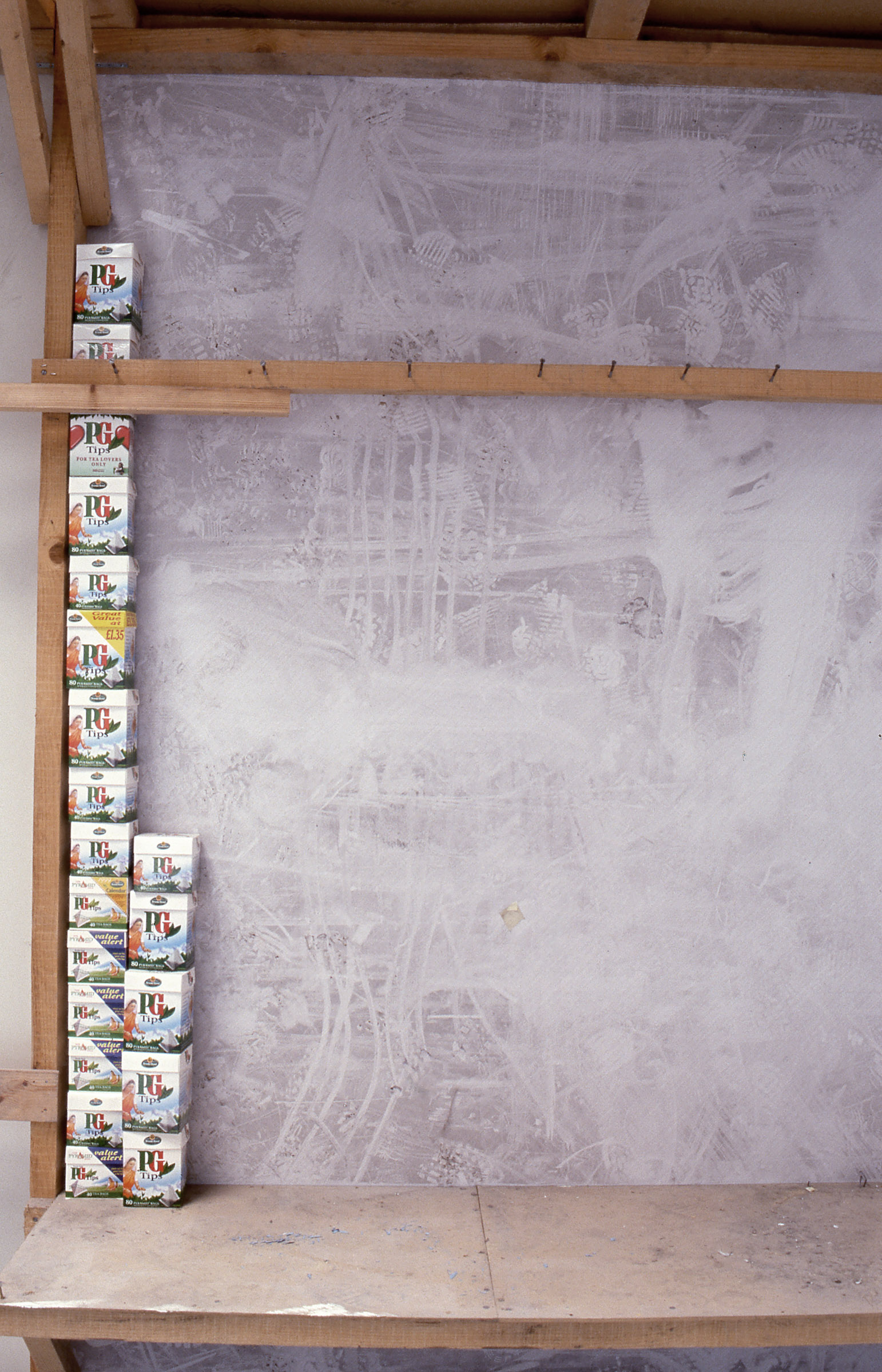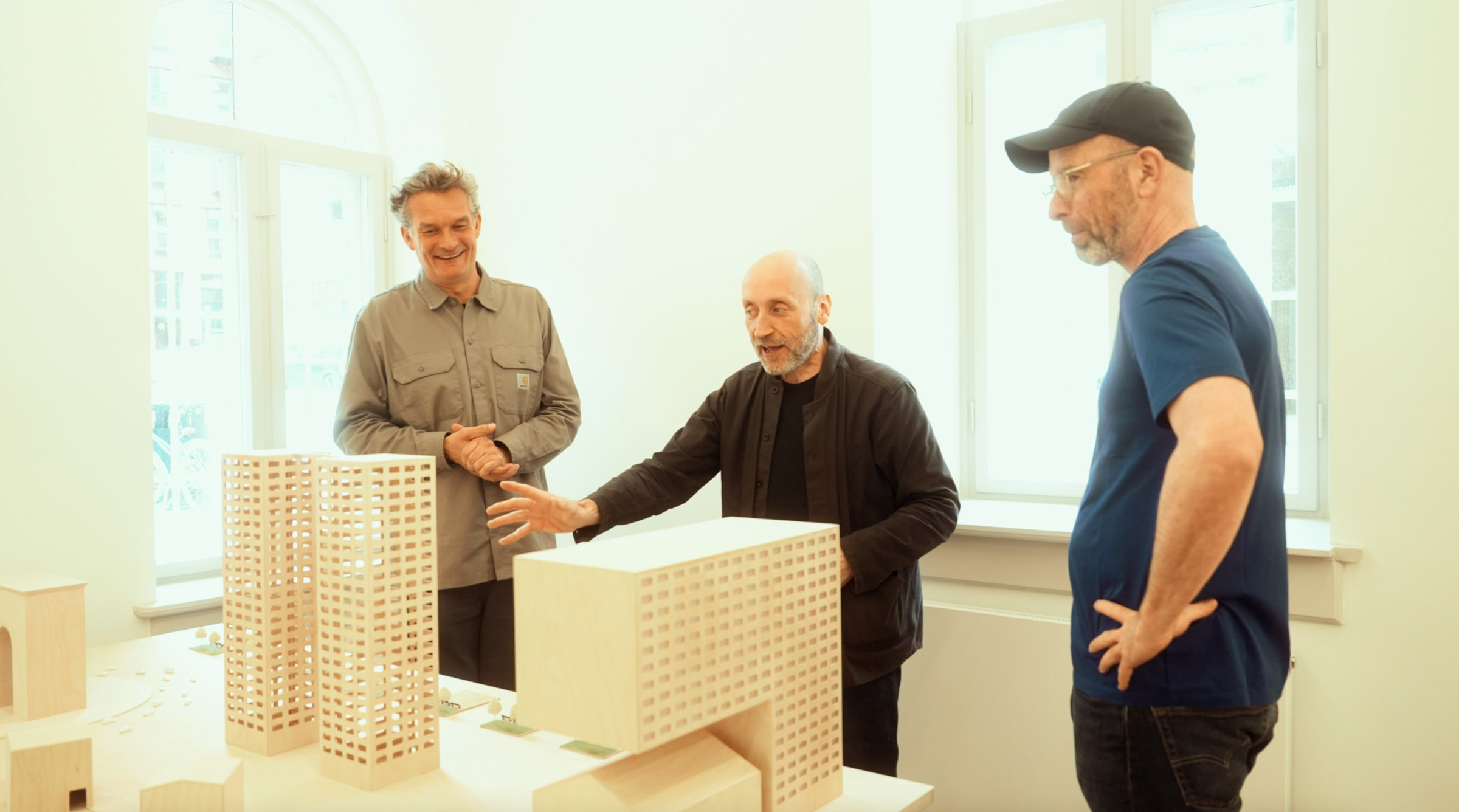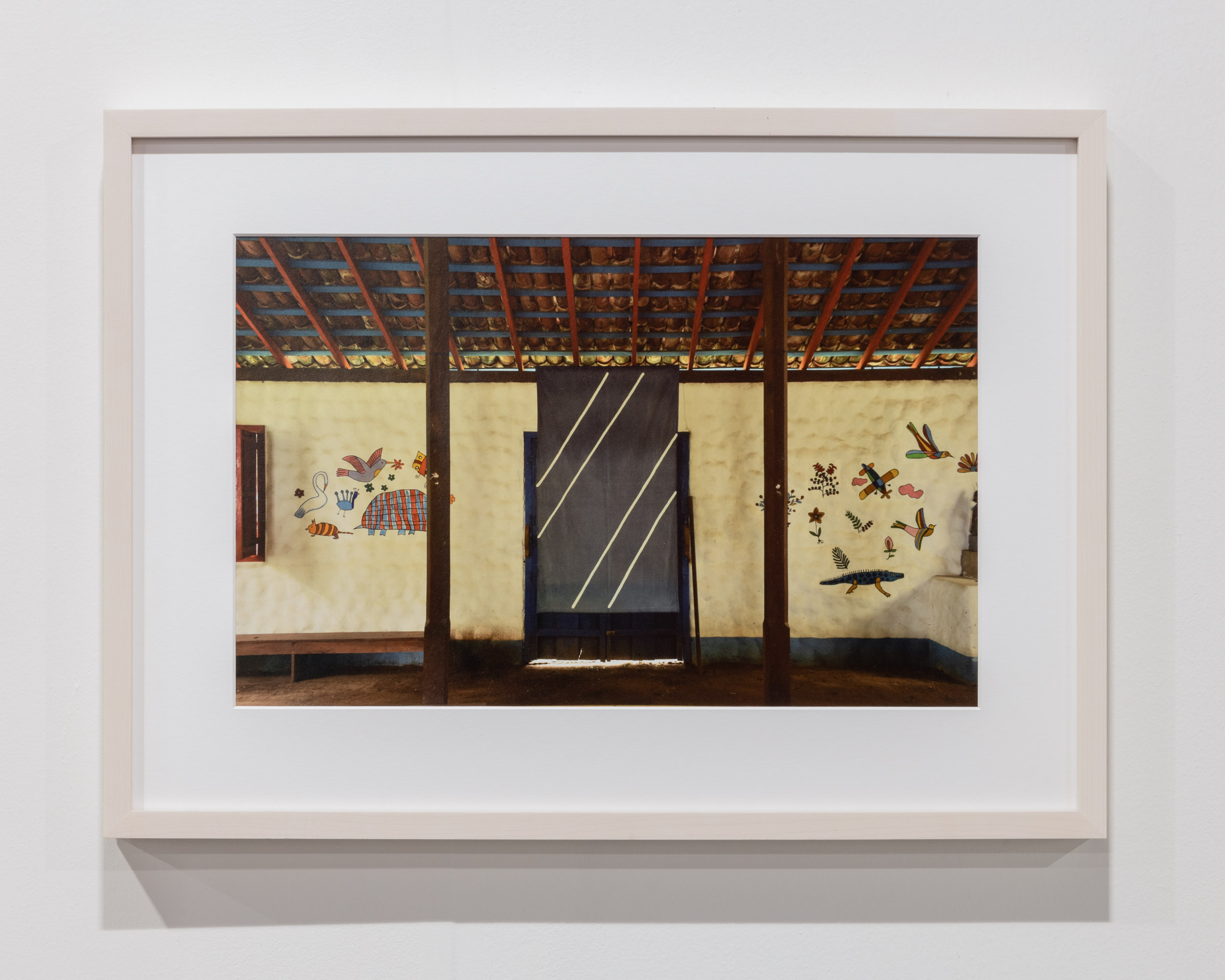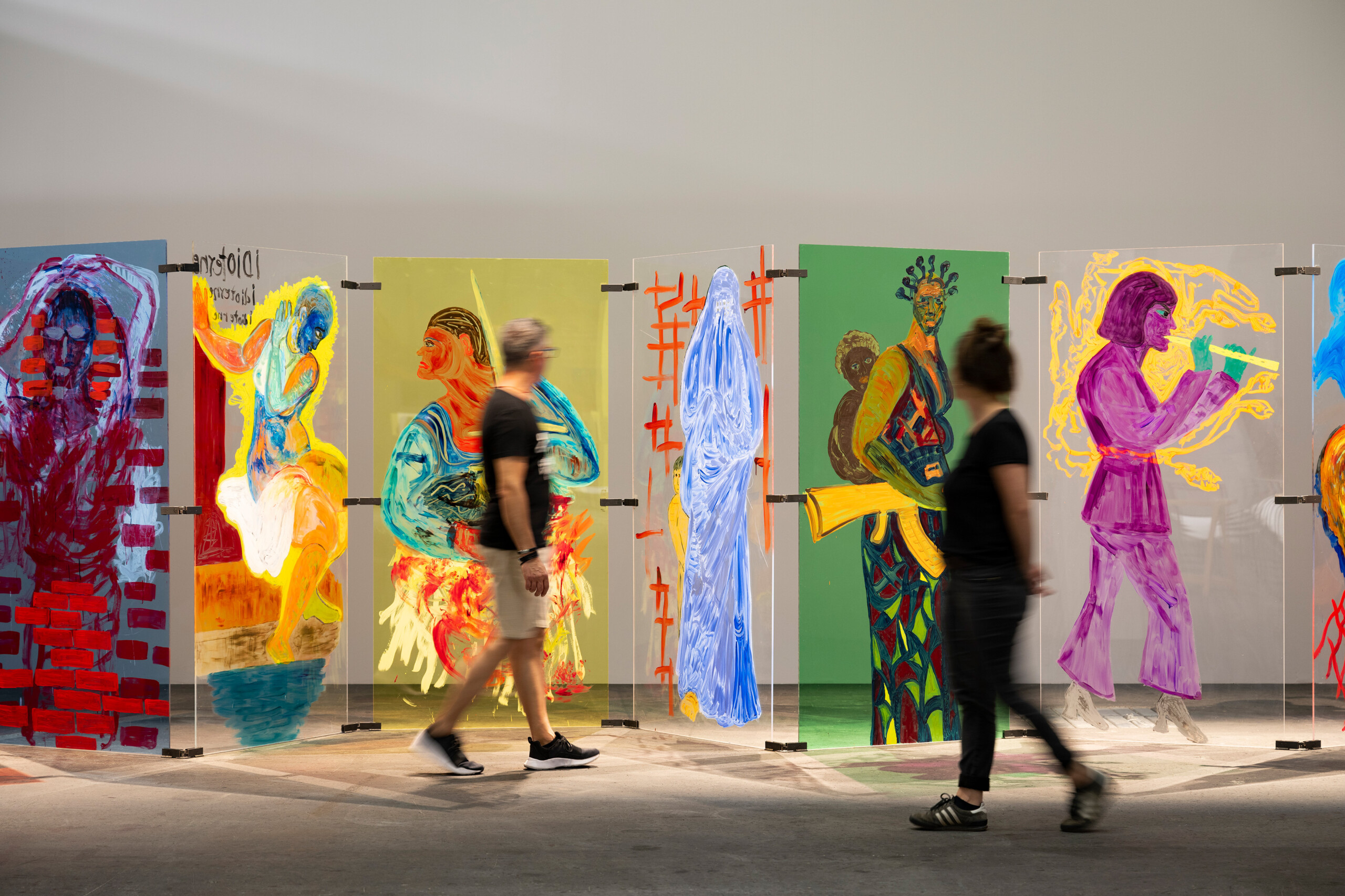Confessions from an artist studio
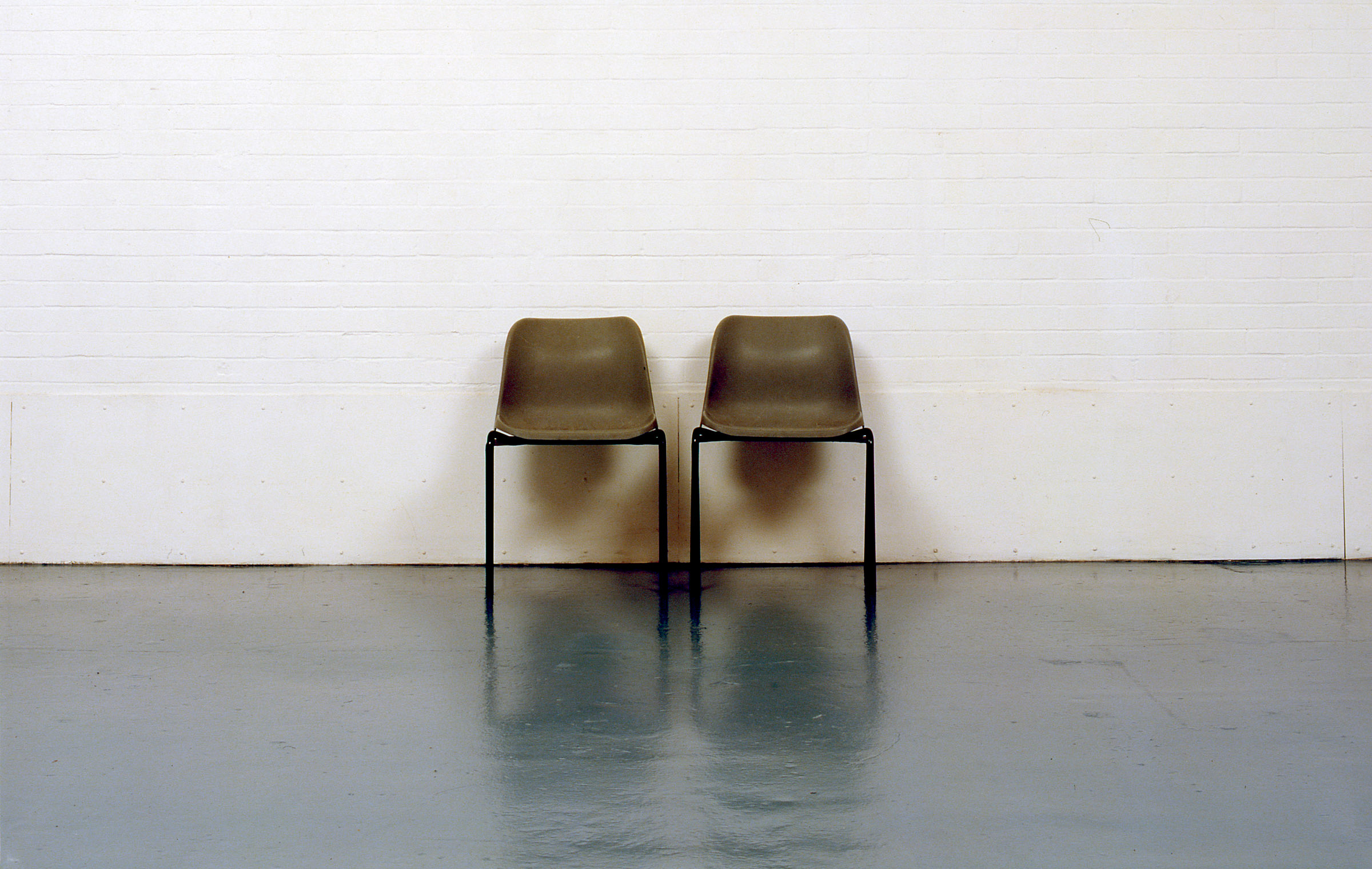
Artist duo John Wood & Paul Harrison show us ‘where the magic happens’ – and share their studio playlist
‘So, this is where the magic happens’ exclaimed the visitor to our studio.
It all felt a bit satin sheets, waterbed and (apologies to the not old and the not British) a bit Robin Askwith.
Robin Askwith was the star of The Confessions films, a series of very saucy, very cheeky and very awful ‘sex’ ‘comedies’ made in England in the 1970s. Confessions of a Window Cleaner, Confessions of a Driving Instructor, Confessions from a Holiday Camp, you get the picture. And now you can’t get the picture out of your head. It’s a gift. We’re artists. You’re welcome.
The films were filled with lots of casual racism, formal sexism and single entendre. It is the kind of England we thought we had left behind only to discover that we really missed it and so in 2016 we voted for it again.
Confessions from an Artist’s Studio was sadly never finished. If you Google it before you Google ‘how to permanently delete my browser history’ you might be able to find some of the rushes. The ‘That’s-a-bit-of-clay-shaped-like-a-penis-potter’s-wheel-scene’ and the ‘Male-life-model-booked-instead-of-female-model-because-his-name-was-Leslie-disappointment’ are just two examples. Classics, honestly. The laughs, they never start.
Confessions from an Artist’s Studio was sadly never made. We made that bit up. We make a lot of things up, it’s kind of our jobs. But maybe we are not that good at our jobs because when we heard, ‘So, this is where the magic happens’, we couldn’t make up a reply. We just breathed.
It was the word ‘Magic’ that threw us. We don’t really do magic. For example, neither of us could be the others Magician’s glamorous assistant unless the definition of magician’s glamorous assistant underwent some hefty redefinition. Something along the lines of: a bit middle-aged, a bit balding, a bit of a tummy, a bit tired most of the time, does not look good in fishnets. Yeah, we could make that work. But we can’t even really make the words Studio and Magic work in the same sentence. Well, apart from in that one.
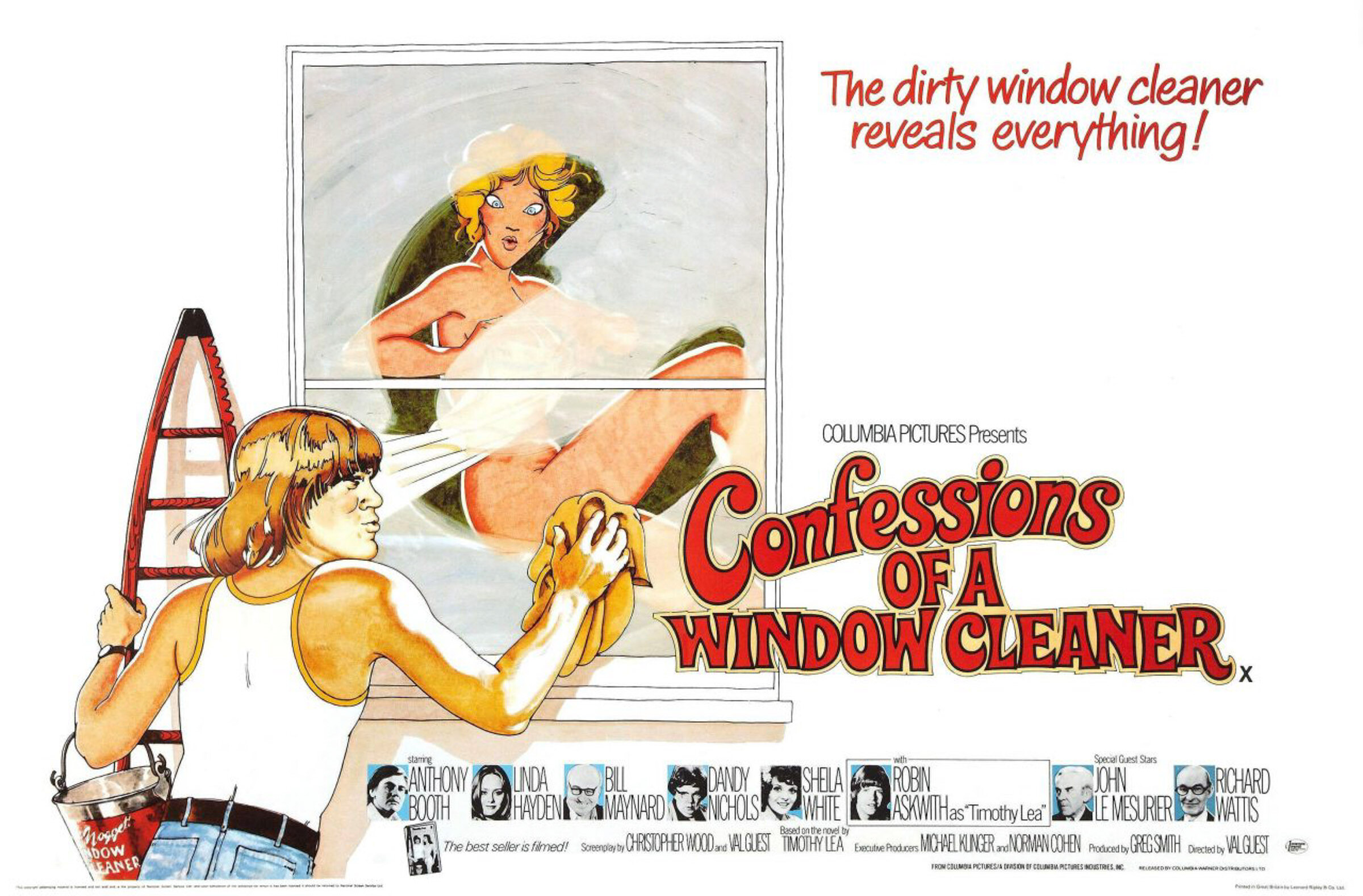
Film poster
Maybe we really are not that good at our jobs. Maybe part of our job is to tell you that what we do in the studio is magic. But we can’t.
Where we are really good at our jobs though is in realising that what we do is a job – even though both our dads were keen on reminding us that it is not a proper job. Making art is a funny job, an unusual job, a frustrating job, but it’s a brilliant job too. And the studio is where we do our brilliant job. It’s where we job.
‘The studio is dead’ people sometimes say, often the same people who sometimes say, ‘Painting is dead’. Of course, painting isn’t dead (though admittedly some of it should be euthanised) and the studio isn’t dead either.
Perhaps they say ‘The studio is dead’ because they think a studio is where magic happens. Perhaps because they think the studio is a special space. That the studio is somehow removed from the world and it should not be removed from the world. Maybe the world is the one material all artists should be working with.
And they may have a point, if in fact, the studio was special.
People who do not have a studio – people with proper jobs and important things to do who don’t actually need one – maybe think a studio is special exactly because they don’t have one. We don’t have office Christmas parties, so we think they are special. We have to imagine what they are like and when we imagine what they are like we imagine Robin Askwith is there, with a photocopier.
A studio is interesting though, we understand that. People who are interested come and visit. ‘This is interesting’ they say. And they are interested, we can tell. We can tell they are interested, for about 20 minutes. Then they are not interested.
Our studio is quite big, maybe bigger than you imagine, if what you imagine is a studio that is quite small. It’s a space that could be used for any number of things, but it is used for one number of thing. And that thing is the production of art and that is the reason it is called a studio.
This room that is different to other rooms because of what it is used for is, like other rooms, divided into different areas. We have the IT department (a 2008 I-mac, on a table); Reprographics (the printer, next to the I-mac); Dispatch (envelopes, on a shelf, with some string) and Reception (the door). There is, of course, an art making area, which is the largest and third most important area. And there is, of course, a tea making area, which is the smallest area, and the second most important.
The tea making area is next to the most important area, the sitting down and talking area. We do sit down a lot, and talk. And we drink a lot of tea too, while sitting down and talking.
We’ve been sitting down, talking and drinking tea, for nearly 30 years now. That’s a lot of chat and a lot of cha. It’s been one long conversation, ‘What shall we do next and how shall we do it’, that’s the gist of it. One long conversation, but one with lots of. Interruptions.
Even if we wanted to hermetically seal the studio, and believe me sometimes it is very tempting, we couldn’t. 20% of what we do is the ‘doing of art’. 80% of what we do is the ‘doing of stuff’. This stuff invariably involves the world. Travel, meetings, emails, accounts. All the stuff that everybody does. Relationships, family, eating, watching TV. All the stuff that everybody does. All this stuff not only ‘enters’ the studio, because we bring it in with us, it also ‘enters’ the work.
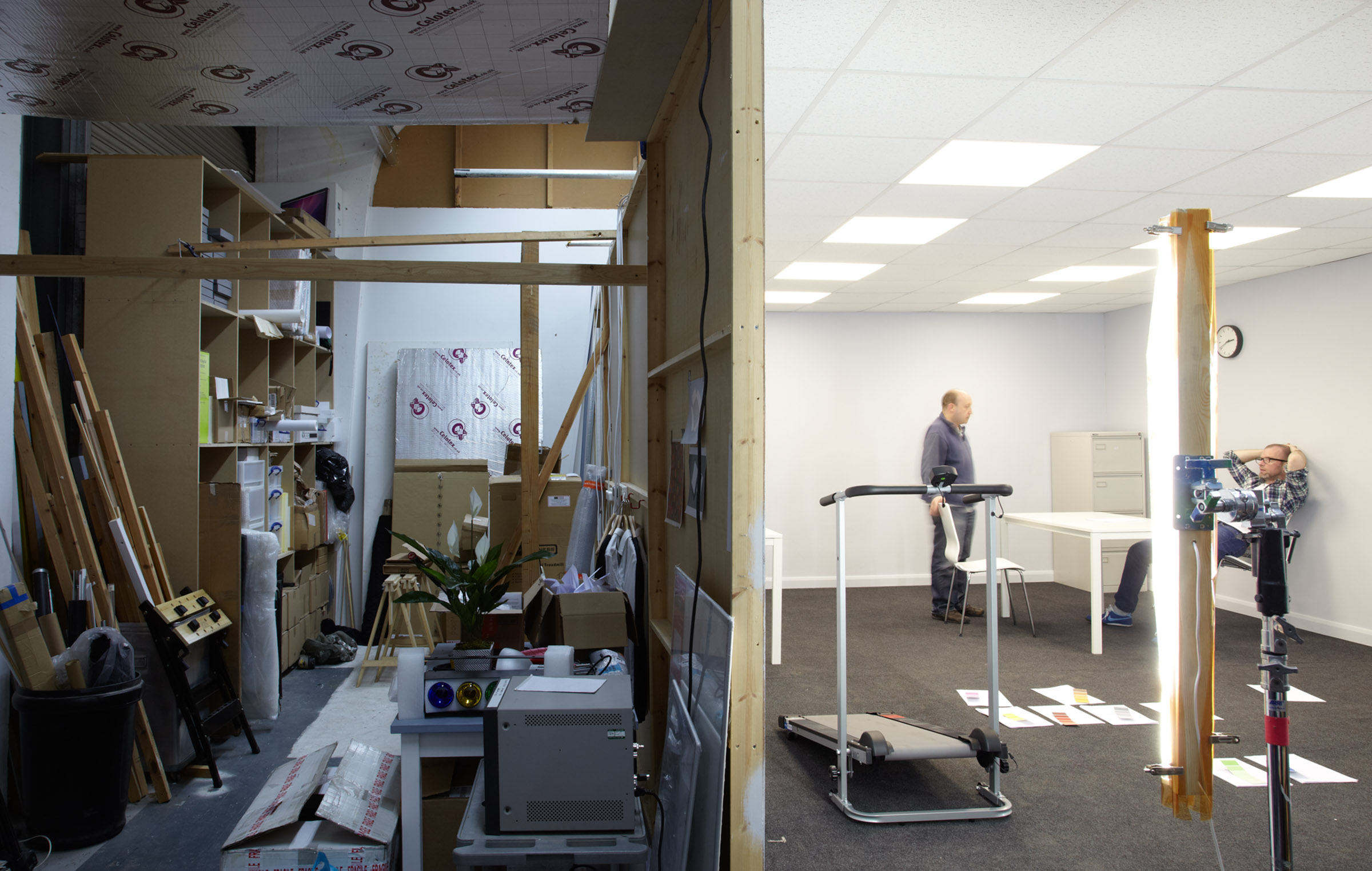
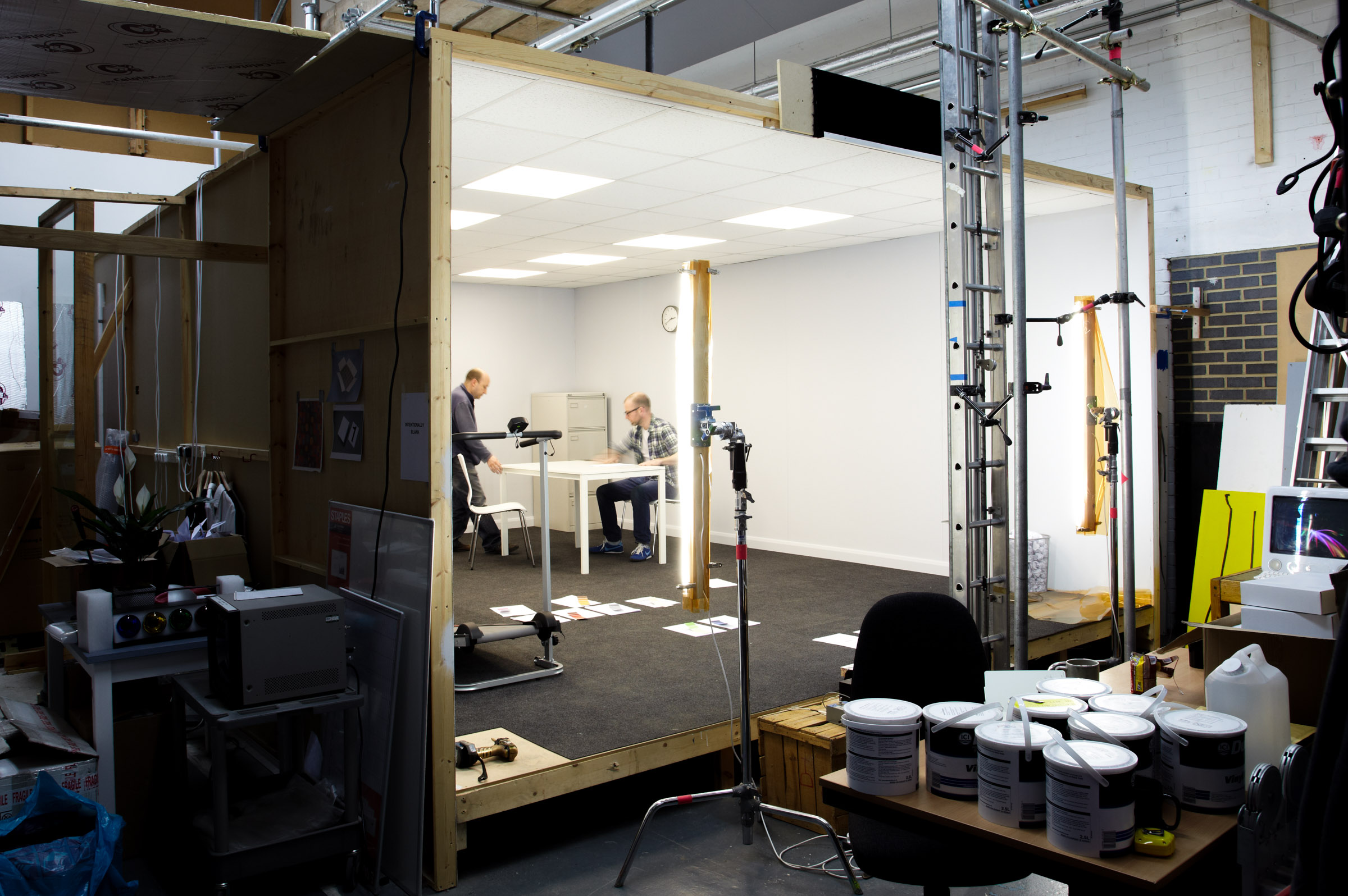
Some of the people who sometimes say, ‘The studio is dead’ sometimes talk about ‘Socially engaged practice’. And whilst there has been some fine work by fine artists made under this banner, it is, after all, a catch all. An attempt at defining something that is difficult to define. But even so we don’t really know what ‘socially unengaged practice’ could be. All work that exists in the world, exists in the world. No work can exist in a vacuum. Unless of course, you have a studio-based accident with a Hoover.
If the world enters the studio and the studio, through the showing of art that has been made inside it, enters the world, then the studio is not removed from it. Its just another space. Not that special really. Not that accessible to everyone maybe. But then again neither is your kitchen.
If there is any magic in making art, and we’re not talking smoke and mirrors here cause we all know there is plenty of that, it’s probably in those moments when something happens in your head, a random thought becoming less, well, random. A thought appears that appears beautiful. That’s a bit of magic maybe. The rest: the testing, the trying, the failing, all the stuff that happens in the studio is just the rest.
We have two heads (one each) and unsurprisingly we carry them around with us (our own) wherever we go. So, those moments that are a bit like magic can happen anywhere. When we are sitting and talking and drinking tea in the studio, or when we are cooking, or when we are a bit pissed off, or when we’re thinking ‘I’m nearly at the end of this text’.
The idea that the studio is where the magic happens is just an illusion. It’s all in our heads.
John Wood & Paul Harrison
‘This is a list of songs’ – Spotify studio playlist
We spend a lot of time pottering around in the studio. In fact, we have spent 30 years pottering around in the studio. Sometimes we put on a bit of music to help with the potter. You can listen to some of our questionable musical choices, from the past 10,950 days, here.

